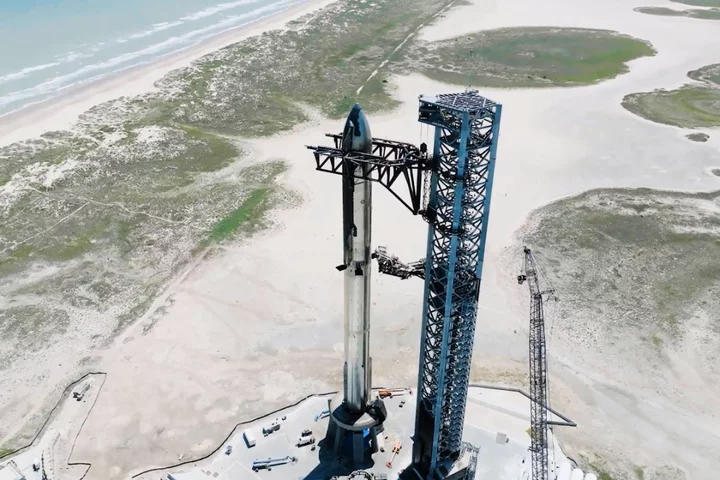
Starship rocket launch window revealed by FAA
Regulators have revealed when they expect to approve a launch license to SpaceX for the next major flight test of its Starship rocket. The head of the Federal Aviation Administration’s (FAA) commercial space division said a mishap investigation from the last test in April had been concluded and a license would likely be granted “somewhere in mid to late October”, assuming SpaceX make the necessary changes. Starship is the biggest rocket ever built, measuring 394 feet (120 metres) and capable of producing 5,000 metric tons of thrust, however it is yet to make it to orbit. An attempt on 20 April, 2023, saw it blow up just over three minutes into a 90 minute flight. The debris that came down in the Gulf of Mexico, as well as from the destroyed launchpad in Texas, became the subject of an FAA investigation. The federal agency said SpaceX would need to take 63 corrective actions before another launch license is approved. Kevin Coleman, the FAA’s associate administrator for commercial space transportation, told SpaceNews this week that 27 of the 63 corrective actions are related to public safety. “So one thing that we’ll need to see before the next operation is evidence that shows that the company has closed out the corrective actions that are specifically tied to public safety,” he said. “We’re on a pretty good schedule. It probably set us somewhere in mid to late October for conclusion of the safety review.” A separate environmental review from the US Fish and Wildlife Service is also required in order to comply with the Endangered Species Act, though Mr Coleman said he hoped it would be wrapped up by the time the safety review is complete. Earlier this month, SpaceX boss Elon Musk said Starship is “ready to launch” after it was pictured on the launchpad of the firm’s Starbase facility in Boca Chica, Texas. The tech billionaire plans to build hundreds of the rockets in order to establish a permanent human colony on Mars before 2050. SpaceX has already secured a multi-billion dollar contract with Nasa to develop the craft for use in the US space agency’s Artemis programme, which aims to return humans to the surface of the Moon this decade. Read More ‘It’s becoming like an airport’: How SpaceX normalised rocket launches Elon Musk makes prediction for imminent Starship launch SpaceX launch of Starship rocket on hold amid ‘mishap investigation’ India’s solar mission completes key manoeuvre, slingshots towards Sun
2023-09-21 00:46
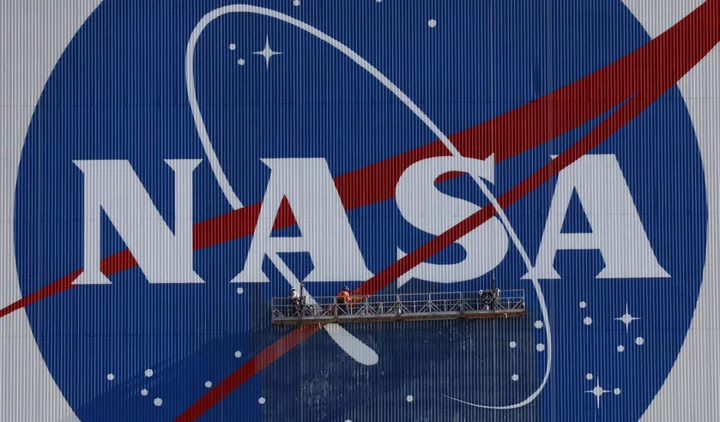
Nasa names new head of UFO research – after abuse forced space agency to try and keep them secret
Nasa has named its new head of research into unexplained phenomena spotted in the sky – after initially saying that it would not. The space agency said that its new head of research into Unidentified Anomalous Phenomena, or UAPs, would be kept secret in an attempt to keep them from being abused. Many of the publicly identified members its research panel have been subject to threats and harassment, the space agency has said. Previously, members of the panel said that abuse had kept them from properly examining the phenomena. The announcement of a new head of research came soon during the discussion of the panel’s first report into UFOs. That report said that it needed more scientific research to make firm conclusions – and less stigma and abuse of those doing it. During a panel discussion of that report, Nasa associate administrator Nicola Fox said that the space agency had appointed a new official to oversee the research and work with other federal agencies. But she told reporters that “we will not give his name out” for fear of reprisals. Later on Thursday, however, Nasa released a new blog post in which it identified the new director as Mark McInerney. “McInerney previously served as NASA’s liaison to the Department of Defense covering limited UAP activities for the agency,” it wrote. “In the director role, he will centralize communications, resources, and data analytical capabilities to establish a robust database for the evaluation of future UAP. “He also will leverage NASA’s expertise in artificial intelligence, machine learning, and space-based observation tools to support and enhance the broader government initiative on UAP.” The report did not give any indication of why the space agency had changed its mind on naming the new appointment. It only noted that it had made the decision to update it to “include details about the UAP research director”. In the 33-page report published earlier on Thursday, an independent team commissioned by NASA cautioned that the negative perception surrounding UFOs poses an obstacle to collecting data. But officials said NASA‘s involvement should help reduce the stigma around what it calls UAPs, or unidentified anomalous phenomena.“We want to shift the conversation about UAPs from sensationalism to science,” NASA Administrator Bill Nelson said. He promised an open and transparent approach. Officials stressed the panel found no evidence that UAPs had extraterrestrial origin. But Nelson acknowledged with billions of stars in billions of galaxies out there, another Earth could exist. “If you ask me, do I believe there’s life in a universe that is so vast that it’s hard for me to comprehend how big it is, my personal answer is yes,” Nelson said at a news conference. His own scientists put the likelihood of life on another Earth-like planet at “at least a trillion.” When pressed by reporters on whether the U.S. or other governments are hiding aliens or otherworldly spaceships, Nelson said: “Show me the evidence.” NASA has said it doesn’t actively search for unexplained sightings. But it operates a fleet of Earth-circling spacecraft that can help determine, for example, whether weather is behind a strange event. The 16-member panel noted that artificial intelligence and machine learning are essential for identifying rare occurrences, including UFOs. No top-secret files were accessed by the panel’s scientists, aviation and artificial intelligence experts, and retired NASA astronaut Scott Kelly, the first American to spend nearly a year in space. Instead, the group relied on unclassified data in an attempt to better understand unexplained sightings in the sky. Officials said there are so few high-quality observations that no scientific conclusions can be drawn. Most events can be attributed to planes, drones, balloons or weather conditions, said panel chairman David Spergel, president of the Simons Foundation, a scientific research group. The government refers to unexplained sightings as UAPs versus UFOs. NASA defines them as observations in the sky or elsewhere that cannot be readily identified or scientifically explained. The study was launched a year ago and cost under $100,000. Additional reporting by agencies Read More We cannot yet explain mysterious sightings in the sky, Nasa panel says Nasa boss says he believes in aliens during UFO hearings Watch as Nasa announces findings of long-awaited UFO study Nasa’s UFO study team reveals first ever report: as it happened Scientists might have seen a ‘life’ molecule on another planet SpaceX crew streak across sky before splashing down off Florida coast
2023-09-16 01:24

Nasa boss says he believes in aliens during UFO hearings
Nasa’s chief says he believes that aliens are real and waiting to be found. Bill Nelson was speaking after the publication of a report by a panel assembled to look into Unidentified Anomalous Phenomena (UAPs), the official names for UFOs, or unexplained objects spotted in the sky. That report found that while some UAPs remain unexplained, more data is found to understand where they have come from. Mr Nelson said that his “personal answer” is that there are vast numbers of inhabited planets throughout the universe. “With the James Webb [telescope] looking at the exoplanets, we are now beginning to discover, and somewhere out there we will discover, another medium-sized stony planet around a medium-sized sun or star at just the right distance... that has carbon, that will have a habitable atmosphere,” he said. “If you ask me do I believe there’s life in a universe that is so vast that it’s hard for me to comprehend how big it is, my personal answer is yes. But I asked some of our scientists: What is the mathematical probability that there is life out there in the universe? And if you calculate in billions of stars in billions of galaxies that there’s replicated in what I just said, another stony planet, the answer was ‘at least a trillion’. That’s from our scientists.” Read More Watch live: Nasa announces findings of long-awaited UFO study We cannot yet explain mysterious sightings in the sky, Nasa panel says Nasa’s UFO study team reveals first ever report: Live updates
2023-09-14 22:54
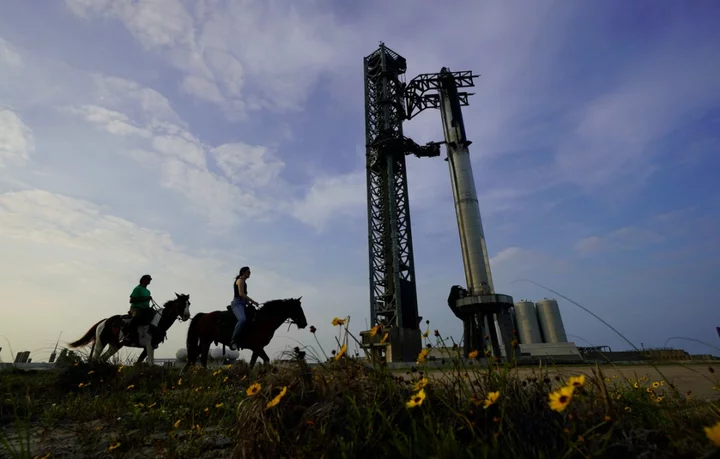
Elon Musk makes prediction for imminent Starship launch
Elon Musk has revealed new details about the next major test flight for SpaceX’s Mars-bound Starship rocket, which he claims is ready to launch. SpaceX is still awaiting approval from the Federal Aviation Administration (FAA) to launch the biggest rocket ever built, with the US regulators currently undertaking a “mishap investigation” for the previous Starship launch in April. The 400-foot-tall (121 metre) rocket exploded over the Gulf of Mexico just three minutes into a planned 90 minute flight on 20 April, breaking up into pieces over the water. An inadequate launchpad was also destroyed by Starship’s huge engines, blasting concrete chunks and metal shards across a 700-acre area. The SpaceX boss had predicted that the rocket would explode, saying ahead of the attempt: “I am not saying it will get to orbit but I am guaranteeing excitement.” The tech billionaire is more hopeful for the latest launch attempt, having made several key changes to how it operates. “We are doing a new staging technique called hot staging where you light the upper stage engines while the booster stage is still firing,” Mr Musk told the All-In Podcast this week. This is the most efficient way to do stage separation of a rocket going to orbit but we did not try that on the last mission... I think, I hope, we have a well over 50 per cent chance of getting through stage separation, and maybe a close to 50 per cent chance of getting to orbit if the hot staging separation method works. “I’d say it’s above 50 per cent chance of getting to orbit this time, whereas previously I said below 50.” Once in orbit, Starship will travel around the planet before splashing down in the Pacific Ocean just north of Hawaii. The Starship rocket is currently fully stacked at SpaceX’s Starbase facility in Texas, though it is not clear how long the private space firm will have to wait before receiving FAA approval. “The SpaceX Starship mishap investigation remains open,” the FAA said in a statement last week. “The FAA will not authorise another Starship launch until SpaceX implements the corrective actions identified during the mishap investigation and demonstrates compliance with all the regulatory requirements of the licence modification process.” Read More SpaceX launch of Starship rocket on hold amid ‘mishap investigation’ SpaceX launch of Starship rocket on hold amid ‘mishap investigation’ Starship ‘ready to launch’, Elon Musk says SpaceX smashes rocket launch record as Musk eyes historic Starship mission
2023-09-13 22:17
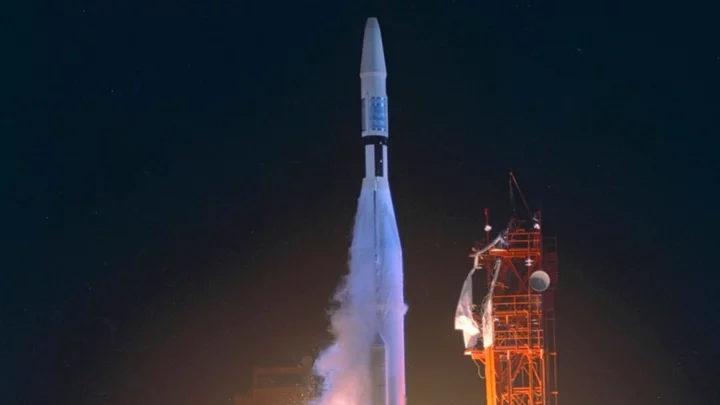
On This Day in 1962, NASA Launched and Destroyed Mariner 1
A software error coupled with a radar failure led to the loss of NASA's first Venus probe.
2023-09-12 00:53
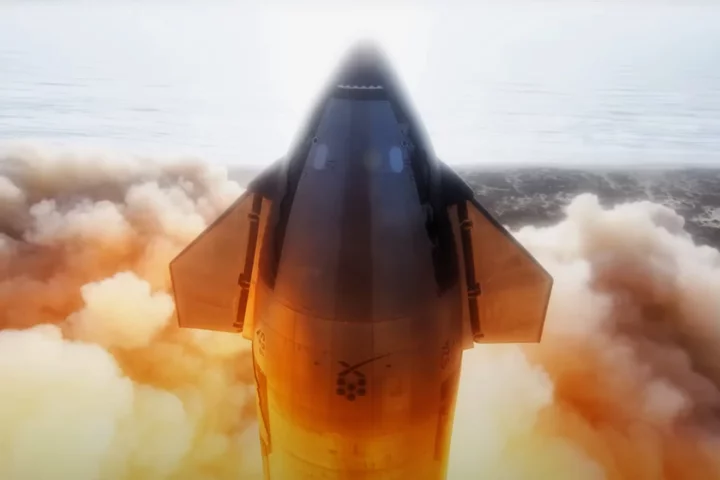
SpaceX launch of Starship rocket on hold amid ‘mishap investigation’
SpaceX will not be cleared to launch its 400-foot-tall (121 metre) Starship rocket until a “mishap investigation” is completed, regulators have said. A statement from the Federal Aviation Administration (FAA) warned of a launch delay for the biggest rocket ever built, just hours after SpaceX boss Elon Musk said the craft was “ready to launch” on Wednesday. SpaceX made its first and only attempt at an orbital Starship launch in April, with the rocket exploding over the Gulf of Mexico just three minutes into the 90 minute flight. The crewless rocket broke up into pieces over an empty stretch of water, however the debris blast created by Starship’s huge engines at its launchpad drew heavy scrutiny from regulators. Concrete dust drifted more than 10 kilometres from the launch site, according to the Fish and Wildlife Service, while concrete chunks and metal shards were discovered within a 700-acre zone surrounding the pad. SpaceX claimed the mission was a success, as Starship and its Super Heavy booster were able to lift off on its maiden test flight, however the FAA launched an investigation soon afterwards. Following Mr Musk’s latest comments that the latest version of the rocket is ready to launch pending regulatory approval, the FAA warned SpaceX that it would need to wait for the investigation to conclude. “The SpaceX Starship mishap investigation remains open,” the FAA said in a statement. “The FAA will not authorise another Starship launch until SpaceX implements the corrective actions identified during the mishap investigation and demonstrates compliance with all the regulatory requirements of the licence modification process.” SpaceX has made numerous alterations and improvements to Starship and its launch pad, including remedial measures aimed at preventing launch debris and a new method for separating the upper stage from its booster rocket. Nasa has already awarded SpaceX a multi-billion dollar contract to develop Starship for its Artemis program, which aims to return humans to the surface of the Moon for the first time in more than 50 years. Mr Musk also plans to use the rockets for more ambitious longer term goals, including establishing a permanent human colony on Mars before 2050. “As the most powerful launch system ever developed, Starship will be able to carry up to 100 people on long-duration, interplanetary flights,” SpaceX notes on its website. “Starship will also help enable transport of many satellites, large space telescopes, and significant amounts of cargo to Earth orbit, the Moon, Mars and beyond.” Read More ‘It’s becoming like an airport’: How SpaceX normalised rocket launches SpaceX abandons YouTube for live streams of launches in favour of X/Twitter Starship ‘ready to launch’, Elon Musk says SpaceX crew streak across sky before splashing down off Florida coast SpaceX smashes rocket launch record as Musk eyes historic Starship mission
2023-09-07 21:49
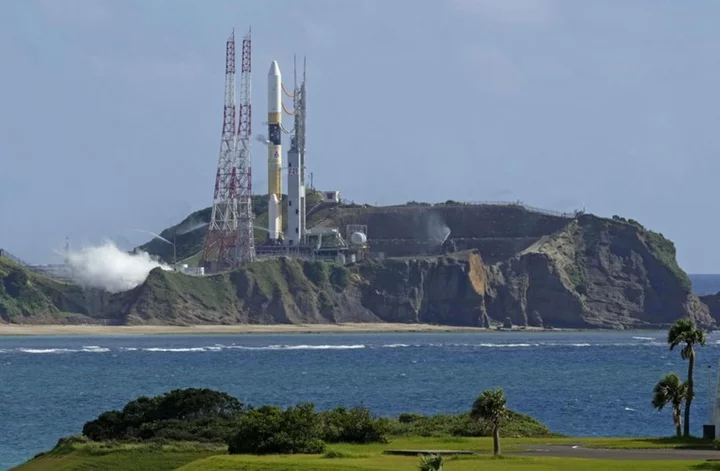
Japan launches rocket carrying moon lander SLIM after three delays
By Kantaro Komiya TOKYO (Reuters) -Japan launched its lunar exploration spacecraft on Thursday aboard a homegrown H-IIA rocket, clearing a
2023-09-07 09:26
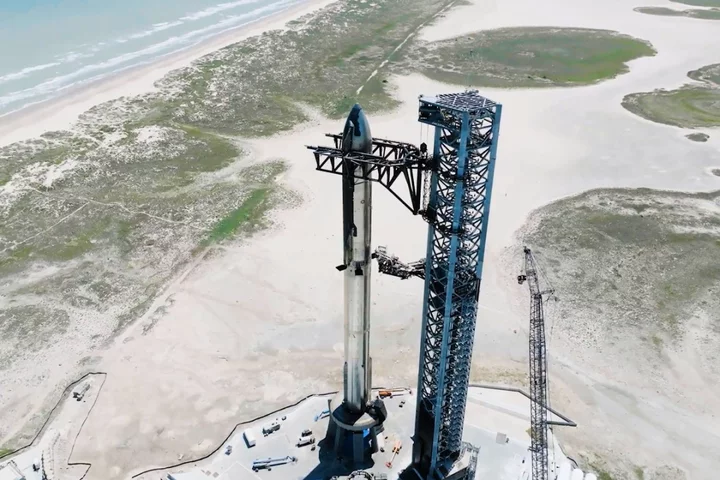
Starship ‘ready to launch’, Elon Musk says
SpaceX is ready to launch its next-generation Starship rocket, according to Elon Musk, pending regulatory approval. Starship is the most powerful rocket ever built, measuring 121 metres in height and capable of producing 5,000 metric tons of thrust. Once testing is complete, the craft will form part of Nasa’s Artemis mission to return astronauts to the Moon. Mr Musk also plans to use the rocket to transport people and cargo around the solar system, eventually using fleets of Starships to establish a permanent human colony on Mars. The next launch will be the second attempt at an orbital flight test, with the only previous effort ending in an explosion just three minutes into the 90 minute flight earlier this year. Each launch attempt requires approval from the US Federal Aviation Administration (FAA), while also requiring favourable weather conditions. “Starship is ready to launch, awaiting FAA licence approval,” Mr Musk posted on X, formerly known as Twitter, on Wednesday. A spokesperson for the FAA previously told The Independent that the launch licence application for Starship depends on various requirements being met, including reviews on policy, payload, safety, airspace integration, financial responsibility and environmental impacts. “The FAA will make a licence determination only after the agency is satisfied SpaceX meets all licensing, safety and other regulatory requirements,” the spokesperson said. SpaceX typically only reveals the date for rocket tests a few days before they take place, though numerous factors can still delay them. Weather at SpaceX’s Starbase facility in Texas is currently favourable for a launch, though the area can be prone to storms and hurricanes between June and November. SpaceX performed its 62nd orbital rocket launch of 2023 earlier this week, breaking its own record for the most number of launches in a single year. The private company has delivered roughly 80 per cent of all Earth payload mass to orbit in 2023, with Mr Musk predicting that this figure will rise to more than 99 per cent once Starship is in operation. “These magnitudes are madness to consider, but necessary to make consciousness multiplanetary,” he posted on X on Sunday. Read More SpaceX smashes rocket launch record as Musk eyes historic Starship mission SpaceX abandons YouTube for live streams of launches in favour of X/Twitter
2023-09-06 18:26

Elon Musk borrowed $1 billion from SpaceX in same month of Twitter deal - WSJ
(Reuters) -Elon Musk withdrew a loan of $1 billion from SpaceX - the two-decade-old rocket company run by the billionaire
2023-09-06 11:18
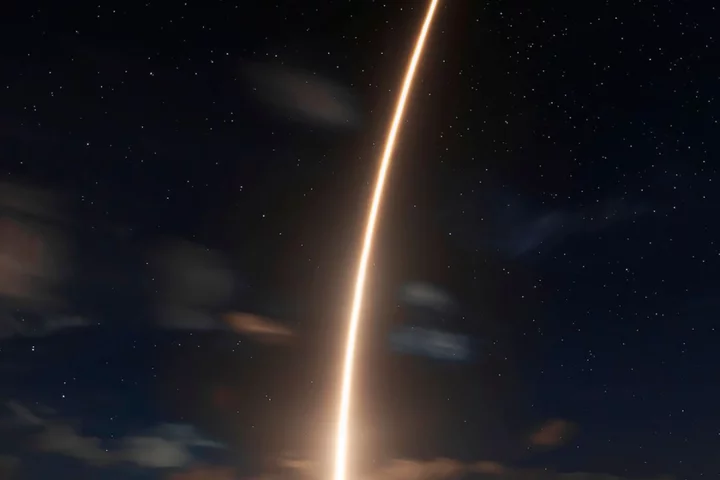
SpaceX smashes rocket launch record as Musk eyes historic Starship mission
SpaceX has broken its own record for the number of launches in a single year with its 62nd rocket sent into space on Sunday. A Falcon 9 carrying Starlink internet satellites lifted off from Nasa’s Kennedy Space Center in Cape Canaveral, Florida, at 10.47pm local time, surpassing the previous milestone of 61 launches set in 2022. It was the 10th flight for the first stage booster rocket, with SpaceX also breaking a separate record earlier this year for launching reused rockets. The Falcon 9 rocket landed on a drone ship in the Atlantic Ocean after delivering the Starlink satellites into low-Earth orbit. SpaceX boss Elon Musk said SpaceX could complete up to 100 rocket launches this year, making the private space firm by far the most prolific company or space agency to send payloads into space. “SpaceX has delivered ~80 per cent of all Earth payload mass to orbit in 2023. China is ~10 per cent and rest of world other ~10 per cent,” Mr Musk posted on X, formerly known as Twitter. “Based on the Falcon launch plan for next year, SpaceX will deliver ~90 per cent of all Earth payload to orbit. Starship will take that to >99 per cent in future years. These magnitudes are madness to consider, but necessary to make consciousness multiplanetary.” SpaceX’s Starship is the largest and most powerful rocket ever built – measuring 121 metres in height and with a thrust of 5,000 metric tons – but is yet to successfully complete an orbital flight. Following a successful high-altitude flight test in 2021, SpaceX attempted a 90 minute orbital flight earlier this year but it exploded just three minutes into the flight. The next attempt is expected to take place this month, though no exact date has been set. More than 1,000 design changes have been made to the craft since the first failed attempt, including new venting systems and heat shields to improve the stage separation of the upper and lower stages of the rocket. The US Federal Aviation Administration (FAA) is yet to grant a launch licence for the latest mission amid concerns about issues revealed in the first orbital launch attempt. SpaceX has already secured a multi-billion dollar deal with Nasa to keep developing Starship for use on the US space agency’s Artemis mission, which aims to return astronauts to the Moon this decade. Mr Musk has previously said that Starship is integral to his plans to turn humanity into a multi-planetary species, with the aim of deploying a fleet of Starships to establish a permanent colony on Mars before 2050. Read More ‘It’s like an airport’: How SpaceX normalised rocket launches SpaceX crew streak across sky before splashing down off Florida coast Watch live: SpaceX launches satellites for US Space Development Agency Elon Musk’s SpaceX sued over allegations of hiring discrimination
2023-09-04 23:27
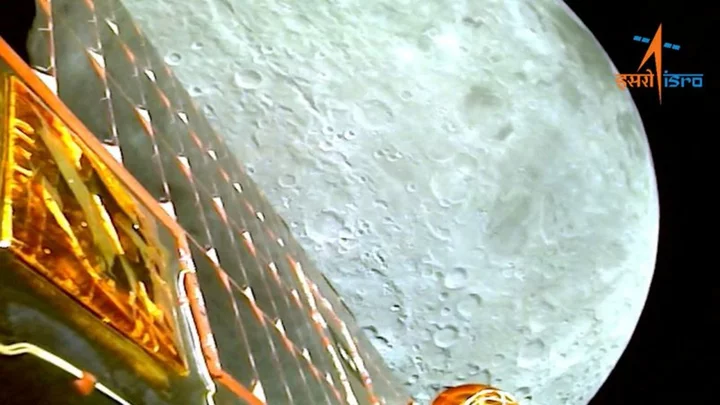
Mission accomplished, India puts moon rover to 'sleep'
By Arpan Chaturvedi NEW DELHI India switched off its moon rover, the first craft to reach the lunar
2023-09-03 16:45
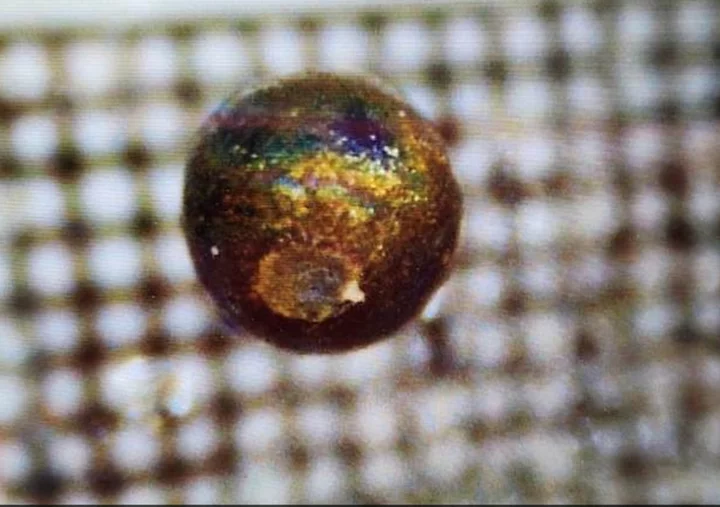
Scientists have found materials in the sea from outside Solar System, controversial Harvard professor claims
Scientists have found material from outside of our solar system for the first ever time, according to a controversial Harvard Professor. The “spheres” were found in the Pacific Ocean in June. But early analysis has now indicated that the material came from outside of our solar system, carried by an interstellar object that crashed into the Earth in 2014, according to Avi Loeb, a theoretical astrophysicist at Harvard University. The material could even be of “extraterrestrial technological origin” because of some unusual characteristics of the material, he said. Professor Loeb has previously claimed that the asteroid may have been artificial, such as an alien spacecraft. “This is a historic discovery because it represents the first time that scientists analyze materials from a large object that arrived to Earth from outside the solar system,” Professor Loeb wrote in his announcement. Professor Loeb has made a number of claims about potential extraterrestrial life and visitors from other solar systems. While has made a number of contributions to astrophysics, he is perhaps best known for his suggestions that Oumuamua, the first interstellar object to visit our solar system, could have been an “alien probe”. His regular and often unusual claims have led to some censure from fellow scientists, who say that he is given to sensationalism and is damaging the usual process of discovery. His pronouncements can be attention-grabbing and undermine the usual work of science to check extraordinary claims with extraordinary evidence, they have said. “People are sick of hearing about Avi Loeb’s wild claims,” Steve Desch, an astrophysicist at Arizona State University, told The New York Times in July, when Professor Loeb revealed details of his search. “It’s polluting good science — conflating the good science we do with this ridiculous sensationalism and sucking all the oxygen out of the room.” Professor Loeb made the most recent claims on Medium, where he has been documenting his trip to the Pacific Ocean to collect materials. In recent years he has been taken with a fireball that fell to Earth in 2014 – and has been looking to collect any fragments from it. He has claimed that details about the fireball indicate that it had come from outside of our solar system. Those claims have proven controversial – though they have been accepted for publication in the prestigious Astrophysical Journal, after initially being rejected – because scientists have argued there is not significant enough proof to indicate it really was an interstellar visitor. Nonetheless, in recent months Professor Loeb and his team have been scouring the Pacific Ocean for any fragments from that object, and in June they announced that they had successfully gathered some examples. Those samples have since undergone testing by scientists. Now Professor Loeb says that analysis shows that the materials are “from a meter-size object that originated from outside the solar system”. A number of details about the material indicated that it was of interstellar origin, he said. He pointed particularly to the amount of beryllium, lanthanum and uranium (or BeLaU) in the objects. That set them apart from other samples not found in the path of the object – and also from objects that would normally be expected to have been formed on the Earth, the Moon or Mars, he said. Professor Loeb said he he was confident that more objects would be found like “IM1”, the name he has given to that object he claimed to be an interstellar visitor. He suggested that there could be “a few million such objects reside within the orbit of the Earth around the Sun at any given time” and that “some of them may represent technological space trash from other civilizations”. He also criticised those many scientists who have expressed scepticism about his claims, joking that he was “running away from colleagues who have strong opinions without seeking evidence, and I am running towards a higher intelligence in interstellar space” and saying that he wishes his critics “happiness and prosperity”. Read More We just received the first ever pictures taken near the Moon’s uncharted south pole Rare blue supermoon brightens the night sky this week India set to launch spacecraft to Sun after successful moon landing Rare blue supermoon brightens the night sky this week India set to launch spacecraft to Sun after successful moon landing Japan forced to suspend launch of historic first Moon lander
2023-08-30 00:53
